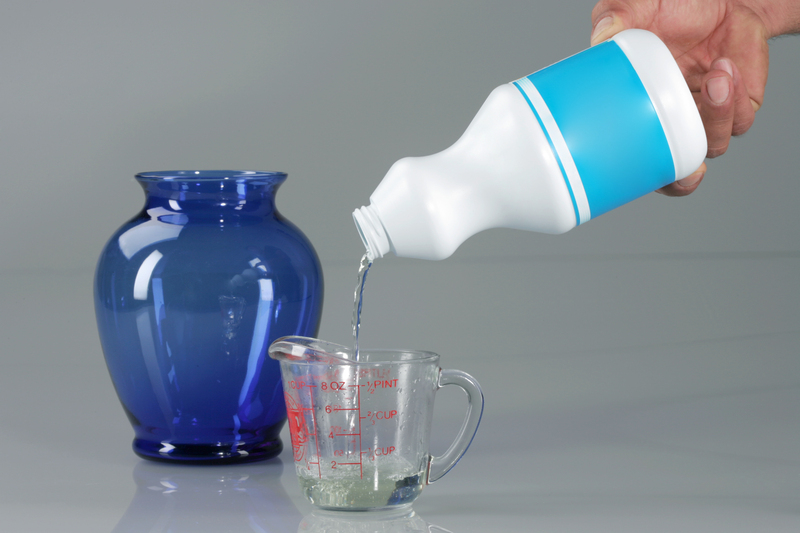Unveil Sparkling Window Sills by Eliminating Mould
Posted on 10/06/2025
Unveil Sparkling Window Sills by Eliminating Mould: A Comprehensive Guide
If your window sills have been attacked by unsightly mould, you are not alone. Mould growth on window ledges diminishes the beauty of your living space, negatively affects indoor air quality, and may even cause health issues. This detailed guide will walk you through how to transform dull, mouldy window sills into sparkling, pristine surfaces. From understanding the causes of mould to specific removal techniques and long-term prevention, you will find everything you need to conquer persistent mould growth on your window sills.

Understanding Mould Growth on Window Sills
Before you start cleaning, it's crucial to learn why mould develops on window sills. Effective mould eradication starts with understanding its roots.
What is Mould?
Mould is a type of fungus that thrives in damp, humid conditions. It reproduces through spores that float in the air and settle on surfaces with sufficient moisture, such as window sills.
- Colour Variations: Mould can appear green, black, grey, or even orange.
- Texture: It can be powdery, slimy, or fuzzy in appearance.
Why Does Mould Grow on Window Sills?
Window sills are especially vulnerable to mould because of several environmental factors:
- Condensation: Glass surfaces and frames accumulate moisture when warm air meets cold surfaces.
- Poor Ventilation: Limited airflow allows moisture to linger, providing an ideal playground for mould spores.
- Organic Debris: Dust, dirt, and plant matter on sills act as food for mould.
Identifying these causes helps target the source, not just the symptom, of your mould problem.
Why You Must Remove Mould from Window Sills
Mould is not simply an eyesore. Below are key reasons you should eliminate mould from your window ledges immediately:
- Air Quality: Mould spores compromise indoor air and may trigger allergies or respiratory issues.
- Property Damage: Mould gradually eats away wooden or painted window frames, leading to costly repairs.
- Home Appearance: Sparkling, mould-free window sills dramatically improve the look and feel of your rooms.
How to Identify Different Types of Mould on Window Sills
Common Varieties of Mould:
- Black Mould (Stachybotrys chartarum): Dark, slimy, and toxic. It prefers very damp locations and is a serious health hazard.
- Green Mould (Aspergillus): Often powdery and commonly found on wood and similar organic matter.
- White Mould: Zeroes in on wooden window sills, appearing as a fuzzy or powdery patch.
Tip: Always wear gloves, a mask, and even eye protection when handling visible mould, as spores can be hazardous.
Step-by-Step Guide: Remove Mould from Window Sills
Let's unveil the secrets to acquiring sparkling window sills by effectively eliminating mould. Follow this professional, methodical approach:
Step 1: Gather Your Supplies
- Rubber gloves
- Protective mask
- Safety goggles
- Soft brush or old toothbrush
- Non-abrasive sponge
- Clean cloths or paper towels
- Spray bottle
- Household cleaner (see options below)
- Disposable bag for waste
Step 2: Choose the Right Cleaning Solution
You have several choices when targeting window sill mould removal:
- White Vinegar: Naturally kills 82% of mould spores. Mix equal parts vinegar and water in a spray bottle.
- Baking Soda: Creates a gentle abrasive and deodorizes. Add 1-2 tablespoons of baking soda to a cup of water and mix.
- Commercial Mould Cleaner: Especially for stubborn or toxic moulds; follow package instructions carefully.
- Hydrogen Peroxide (3% solution): Effective at killing most mould types.
- Bleach (last resort): While it kills surface mould, use it sparingly as it can discolor and corrode surfaces.
Never mix cleaning solutions; doing so can produce dangerous fumes.
Step 3: Prepare the Area
- Open windows or doors to ventilate the space.
- Lay towels or newspapers to catch drips and debris.
- Remove any objects (flower pots, decor) from the window sill.
Step 4: Remove Loose Mould
- Use a dry cloth or soft brush to gently wipe away loose residue.
- Dispose of the used cloths and gloves in a sealed bag immediately after use.
Step 5: Apply Your Cleaning Solution
- Spray or dab the chosen cleaner onto the affected areas.
- Let it soak for 10-15 minutes to break down the mould structure.
Step 6: Scrub the Surface Gently
- Scrub using an old toothbrush for crevices or a non-abrasive sponge for flat areas.
- Wipe away excess mould and cleaner with a damp, clean cloth.
Step 7: Rinse and Dry
- Use a fresh, damp cloth to remove all traces of your cleaning agent.
- Finally, dry the sill completely using a dry towel.
Important Safety Tips:
- Never scrape dry mould -- always dampen first to avoid releasing spores.
- If you spot extensive black mould or feel unwell while cleaning, contact a professional remediation service.
Preventive Measures: Keep Window Sills Sparkling and Mould-Free
Prevention is the key to maintaining clean, shining window sills free of any trace of mould. Follow these long-term strategies:
1. Control Humidity
- Keep indoor humidity below 60%, ideally between 30%-50%.
- Use dehumidifiers in damp rooms and well-ventilated bathrooms.
2. Increase Ventilation
- Open windows daily to ensure airflow.
- Install exhaust fans in kitchens and bathrooms.
3. Address Condensation Issues
- Utilize double-glazed windows to reduce temperature differences.
- Wipe condensation daily, especially in winter.
4. Regular Cleaning
- Dust and clean window sills weekly to prevent organic debris build up.
- Check for and address early signs of mould as soon as they appear.
5. Inspect Window Frames for Leaks
- Seal cracks and gaps with silicone caulk.
- Replace damaged weather stripping.
Consistent maintenance ensures sparkling window sills all year round.
Mould on Different Materials: Tailored Cleaning Advice
Window sills are made of various materials, each with unique cleaning needs. Here's how to care for each type:
Wooden Window Sills
- Avoid excess water--use a slightly damp cloth and allow the wood to dry thoroughly.
- Sand lightly after mould removal if needed, then reseal with wood varnish or paint.
UPVC and Vinyl Window Sills
- These non-porous surfaces are easier to clean. Use diluted vinegar or commercial cleaner.
- Avoid harsh abrasives that can scratch the finish.
Stone or Tile Sills
- Use pH-neutral cleansers to protect the stone or grout.
- Seal porous stone surfaces regularly to prevent future mould growth.
Frequently Asked Questions: Mould Removal from Window Sills
How often should I check my window sills for mould?
Inspect sills at least once a month, especially during damp or cold seasons.
Is vinegar or bleach better for mould?
Vinegar is generally safer and less harsh than bleach for both your health and window sill materials. Bleach can discolor wood and is not effective on porous surfaces where mould roots may remain.
Can mould on window sills be a sign of bigger problems?
Yes. Persistent mould could signal high humidity, leaks, or improper window installation. Address the underlying issue to prevent recurrence.
When should I hire a professional for window sill mould?
- If the affected area exceeds one square metre.
- If mould returns repeatedly despite cleaning and remedying moisture sources.
- If you have health risks such as asthma or immune disorders.
Expert Tips for Keeping Window Sills Sparkling
- Keep houseplants away from sills to reduce moisture build-up.
- Wipe away morning dew (condensation) with a microfiber cloth daily.
- After heavy rain, inspect window sills and walls for leaks or damp patches.
- Add moisture absorbers near windows in problem rooms.

Eco-Friendly and Natural Methods for Mould Removal
If you prefer green alternatives for sparkling window sills, try the following:
- Tea Tree Oil: 1 teaspoon in a cup of water in a spray bottle acts as a natural fungicide.
- Grapefruit Seed Extract: Mix 10 drops with a cup of water for a non-toxic anti-mould spray.
These natural solutions are gentle, safe, and effective for both people and the environment.
Conclusion: Enjoy Sparkling, Mould-Free Window Sills Year-Round
Banishing mould from your window sills is an investment in your home's appearance, value, and your family's well-being. Unveiling sparkling window sills by eliminating mould is both achievable and sustainable when you address the cause, apply proper cleaning techniques, and prioritize prevention. Regular maintenance and prompt attention ensure that your window sills remain a gleaming feature in every room, improving both your home's aesthetics and the quality of the air you breathe. Take action today for cleaner, brighter living spaces and revel in the beauty of immaculate, mould-free window sills!
- Consistent cleaning is your strongest defence.
- Don't let mould compromise the joy of natural light and scenic views.
- Empower yourself with these expert techniques for lasting sparkle.




